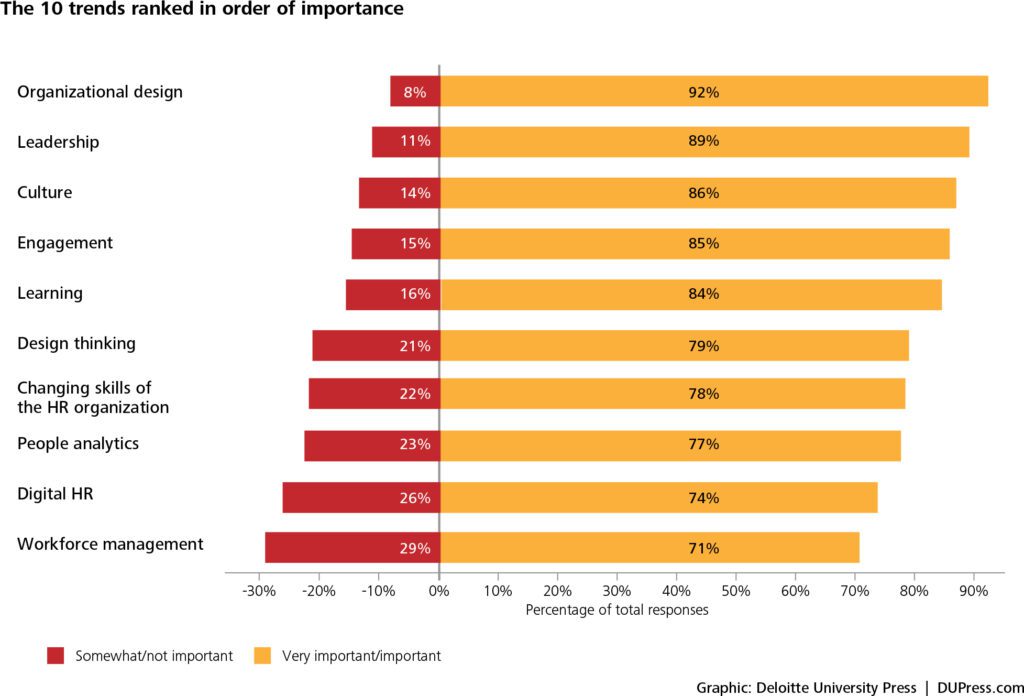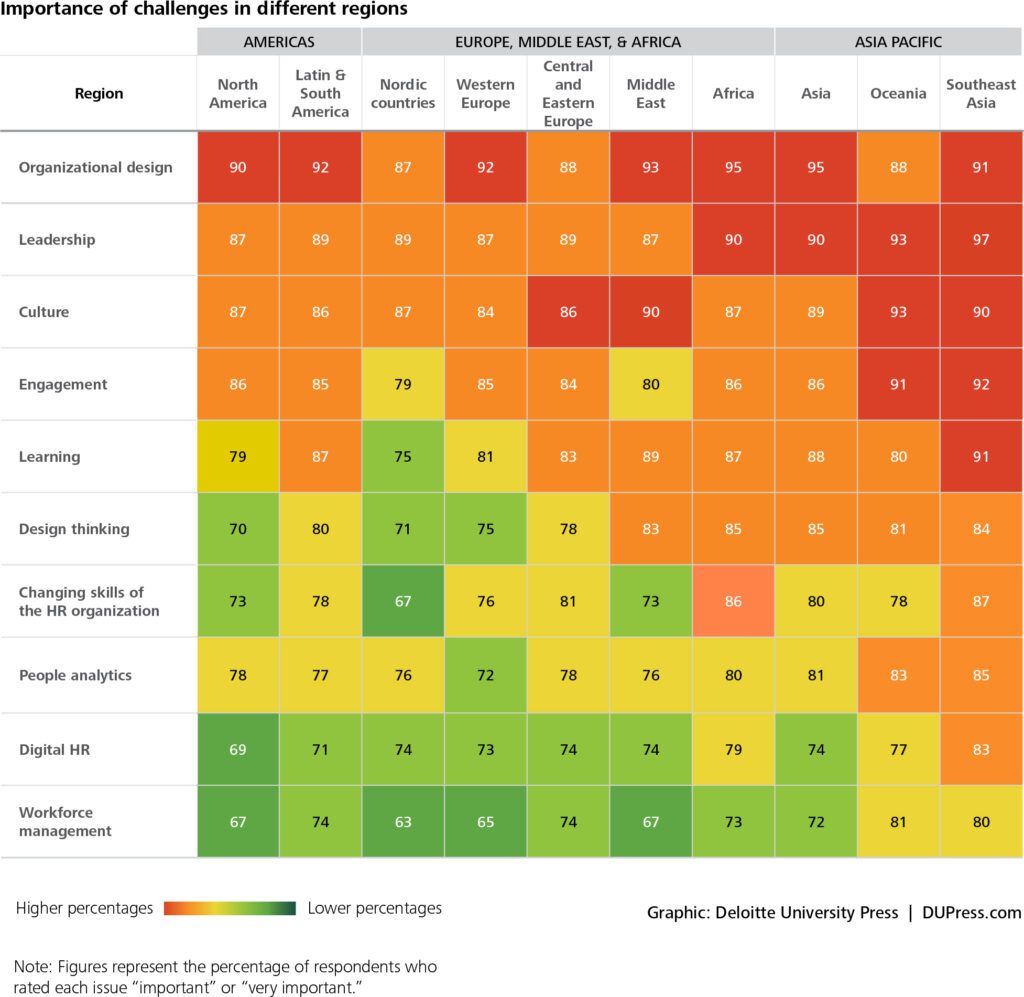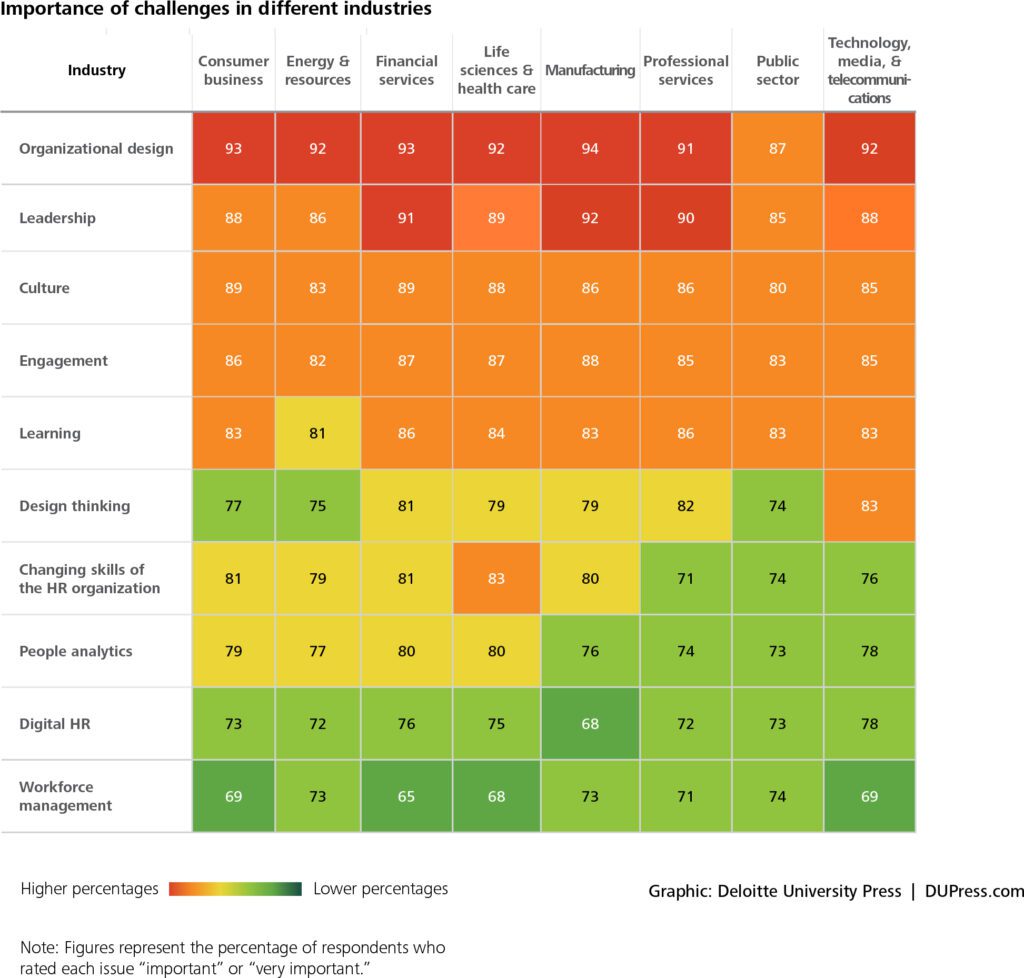Business leaders admit organisation redesign now a critical priority
- 4 Min Read
HR leaders are increasingly leaned upon when designing the future of organisations while also having to overhaul their own processes.
- Author: Owain Thomas
- Date published: Apr 7, 2016
- Categories

Changes to the way people work have become so significant that business and HR executives around the world now believe it is a critical priority to redesign their organisations to accommodate them.
As a result of this revolution HR leaders are becoming more important in defining the future of organisations while also needing to overhaul their own processes.
This sudden realisation of this need to change overtook more common issues of increasing employee engagement, improving retention and developing leadership that have prevailed for the last three years.
According to the Deloitte Human Capital Trends 2016 report, 92% of business and HR executives questioned called organisation redesign a critical priority.
The consultant interviewed more than 7,000 business and HR leaders from 130 countries to produce the report.
It found that these new organisations were to be built around “highly empowered teams, driven by a new model of management, and led by a breed of younger, more globally diverse leaders.
“To lead this shift toward the new organisation, CEOs and HR leaders are focused on understanding and creating a shared culture, designing a work environment that engages people, and constructing a new model of leadership and career development,” it added.
HR evolution
The challenges faced by HR teams to deliver within this rapidly changing environment were many and varied and required extensive evolution of HR and the skills of practitioners, Deloitte argued.
It suggested that the HR function was taking on a new role as the steward and designer of these new people processes.
“The mission of the HR leader is evolving from that of chief talent executive to chief employee experience officer,” the report said.
“HR is being asked to simplify its processes, help employees manage the flood of information at work, and build a culture of collaboration, empowerment, and innovation. This means that HR is redesigning almost everything it does—from recruiting to performance management to on-boarding to rewards systems.
“To do this, our research suggests that HR must upgrade its skills to include the areas of design thinking, people analytics, and behavioural economics,” it added.
The consultant concluded by warning that many companies lacked the HR practices, culture, or leadership support to manage a workforce where contingent, contract and part-time workers made up almost one-third of employees.
Top organisational challenges
Given the massive overarching structural reforms executives believed were immediately necessary, it is perhaps unsurprising that more mundane or routine tasks such as developing HR analytics, digital HR processes or daily workforce management slid down the top 10.
Deloitte noted that a key shift was under way as corporate leaders focused on adapting their organisation’s design to compete successfully in the highly challenging business environment.
“Culture and engagement are also a major concern for the C-suite. This reflects, in part, the rise of social networking tools and apps that leave companies more transparent than ever, whether they like it or not,” it said.
“Top executives increasingly recognize the need for a conscious strategy to shape their corporate culture, rather than having it defined for them through Glassdoor or Facebook.”
Local priorities
There were some slight variations in priorities for business and HR leaders across different locations.
Within Southeast Asia leadership was a near unanimous choice as being the biggest priority, perhaps hinting at the cultural norms and demands within that part of the world.
Meanwhile in the Middle-East employee engagement was far less important with learning and design thinking seen as bigger priorities. These may reflect the rapidly expanding economies and influence of this region upon the global business markets.
Pan-industry parity
It was notable that among different industries the top two concerns were unanimous – with organisational design and leadership being the most critical factors – and the top five being largely unchanged too.
Public sector organisations stand out as being least concerned with organisational change and leadership, however this is probably influenced by being part of governmental structures that they have little influence over.










